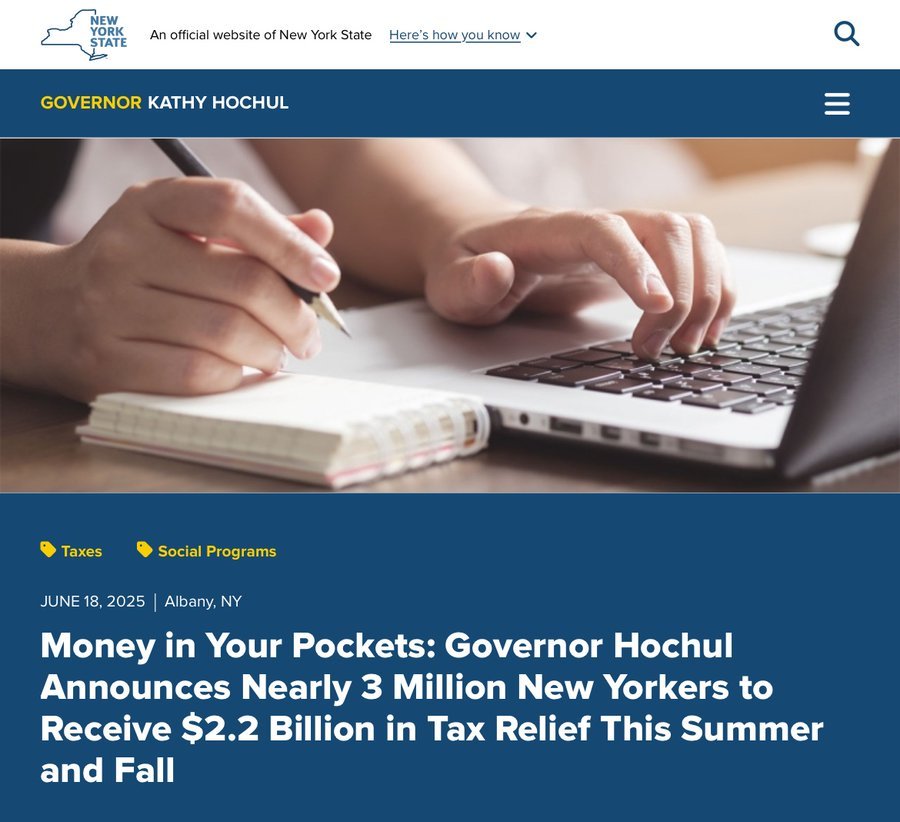STAR Stimulus Payment: How New Yorkers Can Receive $300 to $1,500 in 2025
The STAR stimulus payment will provide eligible New York homeowners with direct financial relief ranging from $300 to $1,500 in September 2025. This initiative is part of the state’s School Tax Relief (STAR) program, which has a $2.2 billion budget aimed at helping nearly 3 million residents manage rising living costs.
How the STAR Stimulus Payment Works
The STAR program delivers benefits in phases, tied to local school tax due dates. The first phase supported homeowners with tax deadlines in June and July. The second phase, now underway, covers those with tax due dates between August and October. Payments will continue throughout the fall as determined by each district’s schedule.
Governor Kathy Hochul confirmed that the STAR program is designed to reduce the burden of school taxes while offering additional relief during a period of high inflation.
Payment Amounts: Basic STAR vs. Enhanced STAR
The STAR stimulus payment is divided into two categories:
- Basic STAR: Homeowners under 65 with annual household income up to $500,000 may receive checks between $350 and $600.
- Enhanced STAR: Homeowners 65 or older with an annual household income below $250,000 (individual or combined) may receive payments between $700 and $1,500.
The amount depends on property value and income eligibility.
Beneficiary Areas in New York
The STAR stimulus payment is distributed across 10 regions in New York State. Key figures include:
- Long Island: The largest beneficiary, with 582,000 families receiving a total of $698.4 million.
- North Country: The smallest beneficiary region, with 88,000 families receiving $47.2 million.
Other regions fall between these two, ensuring broad coverage across the state.
Government Position on STAR Stimulus Payment
Governor Hochul emphasized that the STAR program reflects her administration’s commitment to supporting families during financial uncertainty. By delivering direct checks and credits, the state is helping homeowners keep more money in their pockets at a time of rising expenses.

